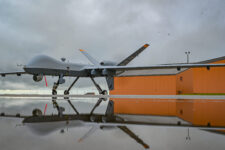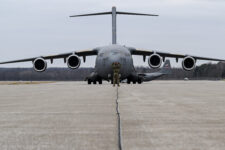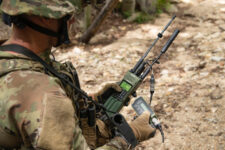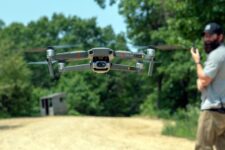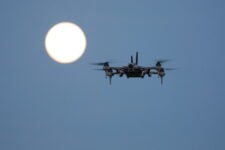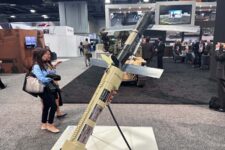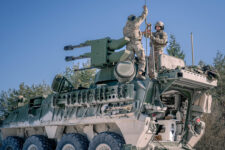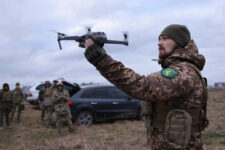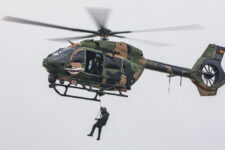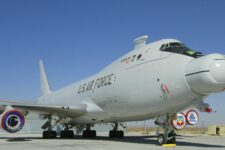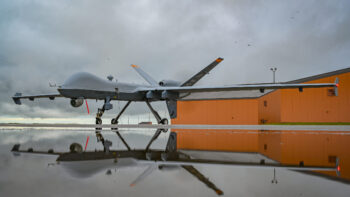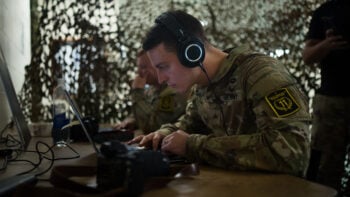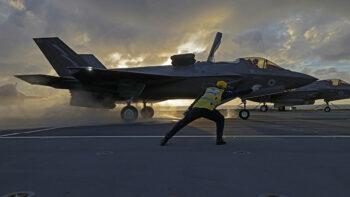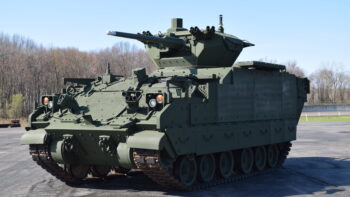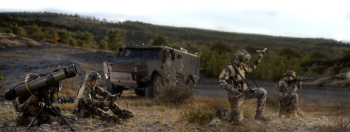WASHINGTON: Today, the Army announced the five operational units that will field-test the four contenders for the Future Tactical Unmanned Aerial System (FTUAS) replacing the Shadow. The units – real soldiers in deployable formations, not specialized testing personnel – represent a cross-section of the Army’s different kinds of Brigade Combat Teams (BCTs):
- The 1st Armored BCT, 1st Infantry Division – heavily armored tracked vehicles based in Fort Riley, Kansas – will get the first prototypes in April.
- The 2nd BCT of the 101st Airborne – helicopter-borne light infantry out of Fort Campbell, Kentucky – will get their FTUAS in May.
- The 1st BCT, 2nd Infantry – a medium-unit mounted in wheeled Strykers, based at Fort Lewis, Washington – gets theirs in June.
- The 3rd Armored BCT, 1st Armored Division – another heavy unit, this one at Fort Bliss, Texas – start in July.
- The 1st BCT of the 82nd Airborne – more light infantry, this time paratroopers – come last, in September. (The Army’s skipping August, like the French).
“We give our first briefing to the Big Red One last week and spoke to the battalion commander that’s going to receive these in the 101st also last week,” said Brig. Gen. Walter Rugen, head of the Army’s aviation modernization task force, the Future Vertical Lift Cross-Functional Team. “These commanders and soldiers are extremely excited to get this kit,” he told reporters.
Each of the four FTUAS contenders will be tested by a different brigade for at least six months, culminating in wargames at the famed Combat Training Centers, with funding for another six if needed. One happy company will get to equip two brigades; Rugen said that determination is up to Army Contracting Command’s assessment of “best value” and should be announced this December.
Which unit gets which drone is still to be determined, largely based by which company gets its prototypes ready when. The contenders take two different approaches to taking off and landing vertically like a helicopter, without a runway, but still flying efficiently and quietly over distances like an airplane:
Arcturus UAV’s Jump 20 (in the video above), L3 Harris Technologies’ FVR-90, and Textron/AAI’s Aerosonde HQ are all part quadcopter and part propeller plane: They’ve got wings, pusher propellers, and helicopter-style rotors.
Martin UAV’s V-BAT (above) is what’s called a tailsitter: It perches on its tail, nose to the sky, to take off and land, but flips to horizontal flight once in the air.
As the field tests wrap up – in February 2021 if the schedule holds – the Army won’t immediately move to picking a winner. Instead, feedback from the brigades will inform the service’s final Capabilities Development Document (CDD) and the official requirement, which in turn will guide the final choice.
“Shadow has been around for a long time,” Rugen said, entering service in 2002-2003. It was revolutionary in its day – frontline ground units had never had their own scout aircraft before – but it’s showing its age:
- Shadow is loud enough to alert the enemy it’s overhead, giving them a cue to hide or – for well-armed adversaries like Russia or China – to shoot it down.
- It requires a runway to take off and land. That limits its ability to keep up with fast-moving combat units and makes it dependent on a static, centralized, and easily targeted base. These weren’t crippling problems in the largely stationary counterinsurgency warfare of the last 20 years, but they could be fatal against Russia or China, which have their own recon drones and long-range missiles.
- A full platoon of four Shadows, ground control stations, and support equipment takes two and a half C-130 transport planes to deploy. The goal for FTUAS is to fit the platoon in a single CH-47 helicopter — so it can not only operate without a runway, it can deploy without one as well.
Hezbollah, Houthis downing of drones challenges Israel, US air superiority
“Israel and the United States will need to gradually adjust their operating procedures,” said Bruce Bennett, senior adjunct international defense researcher at RAND Corporation.
